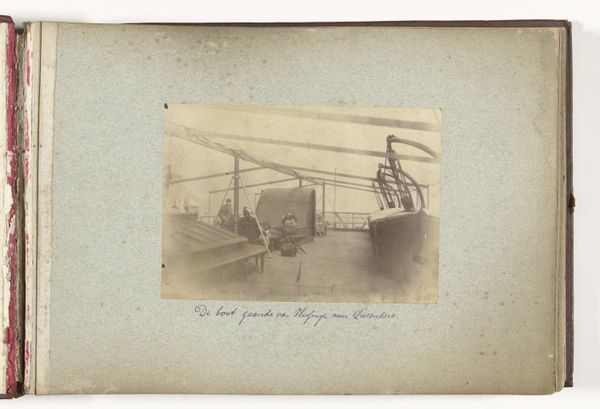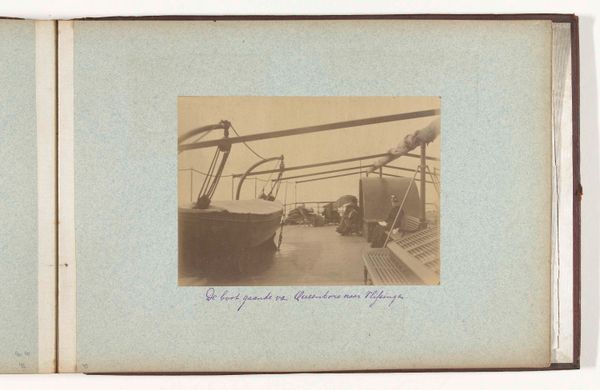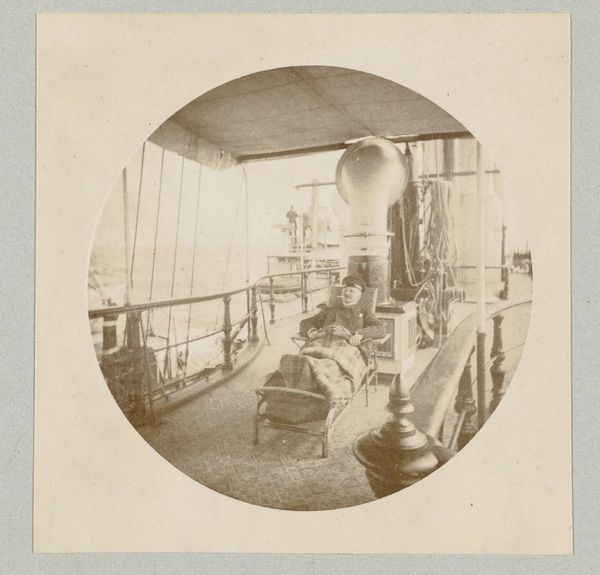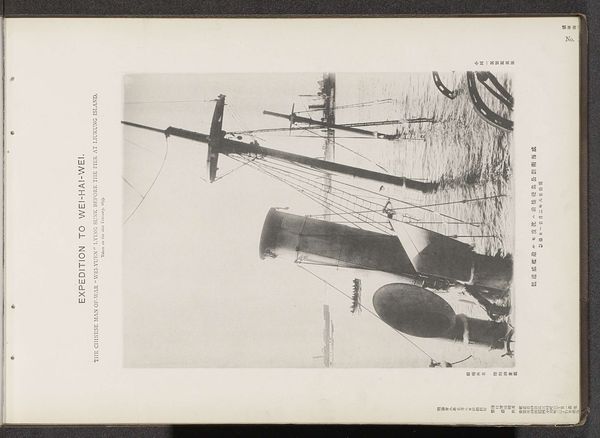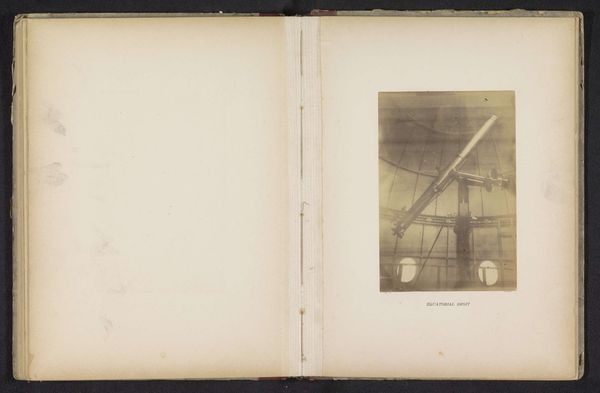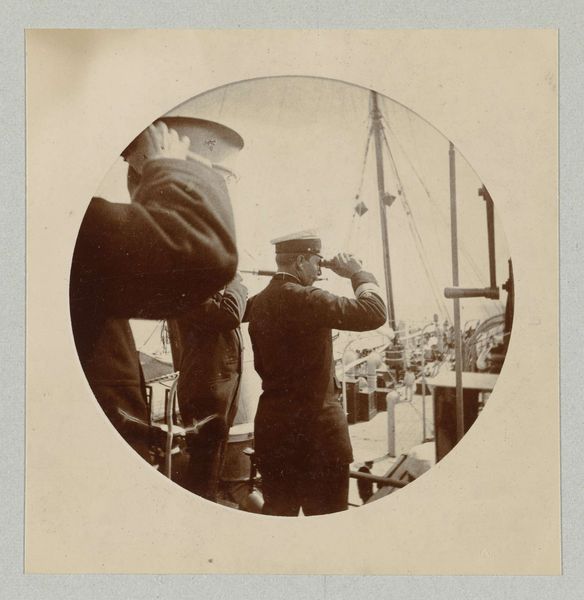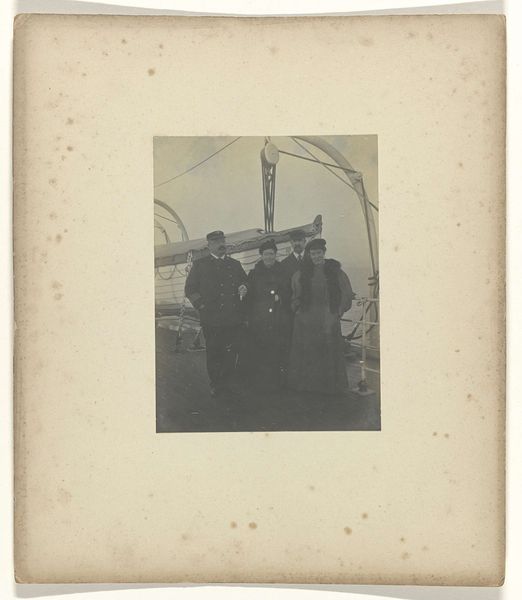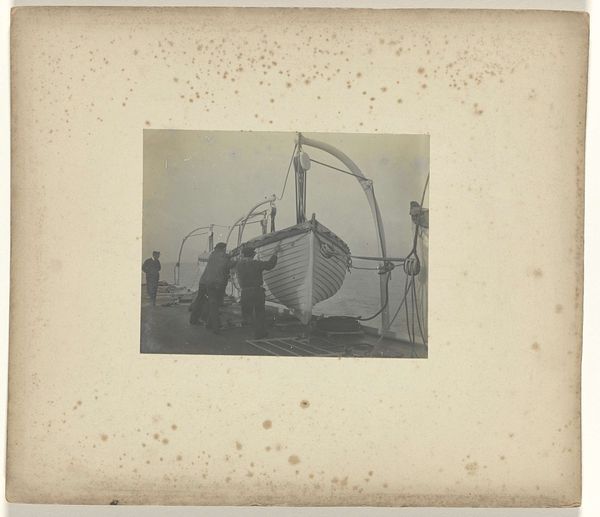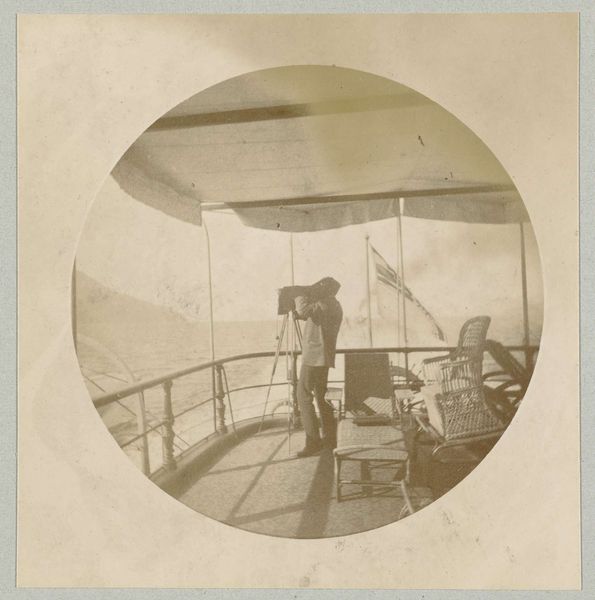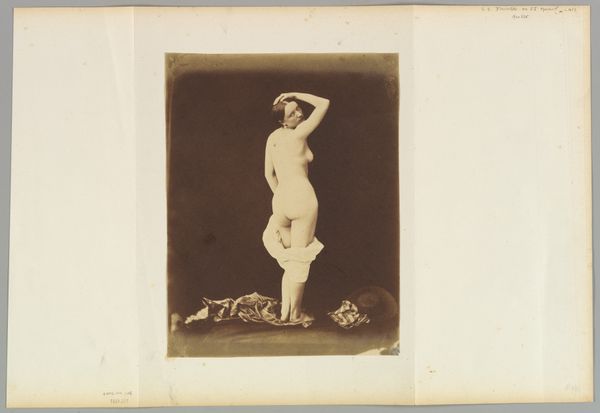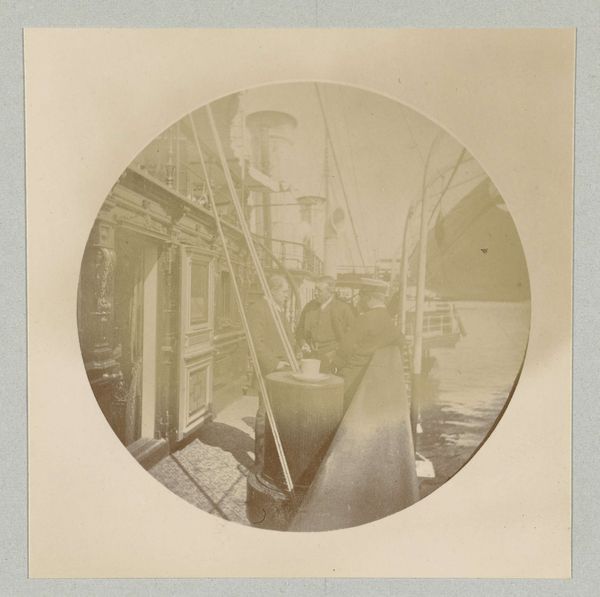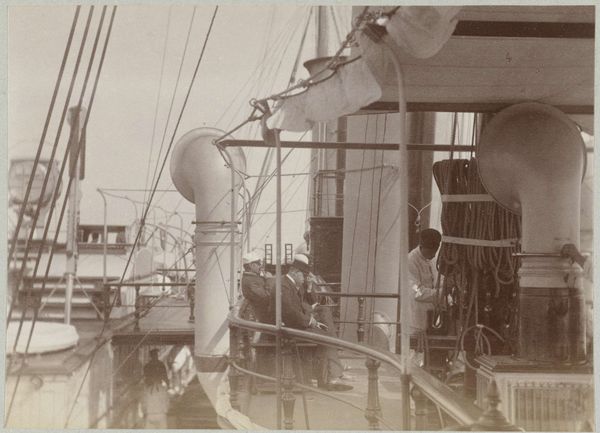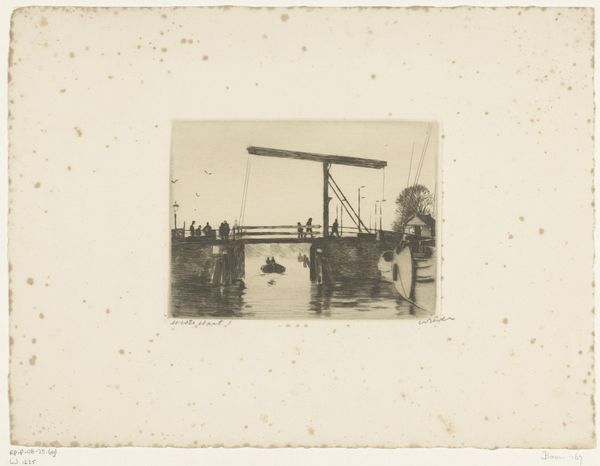
Passagiers op het dek van de boot tussen Queensborough en Vlissingen Possibly 1889
0:00
0:00
photography, albumen-print
#
portrait
#
photography
#
cityscape
#
albumen-print
#
realism
Dimensions: height 125 mm, width 175 mm
Copyright: Rijks Museum: Open Domain
Editor: So, here we have "Passengers on the deck of the boat between Queensborough and Vlissingen," a photograph, probably from 1889, by Henry Pauw van Wieldrecht. It's an albumen print, showing people on a ship deck. What strikes me is the separation, how solitary each person seems despite being in a shared space. What do you see in this piece? Curator: It's compelling how the composition highlights this sense of detached existence. Looking at this, I'm immediately drawn to the themes of colonialism and social class. These passengers are traveling between nations, indicative of a connected world, but who gets to participate in this global exchange? Who could afford this journey, and whose labor made it possible? Editor: That's an interesting perspective I hadn't considered. The figures seem almost indifferent to their surroundings, lost in their own worlds. Is it possible this reveals some societal commentary? Curator: Absolutely. Consider the backdrop: shipbuilding, industry, these pipes…They reek of labor and empire, right? Who directly profits from the ships? Think about who is omitted. I wonder what their stories are, what opportunities were denied to them so others could embark on travels for leisure or capital gain? Editor: That's such a powerful interpretation. Thinking about it now, I see the picture far differently. There are clear societal divisions, not just people taking a boat trip. Curator: Precisely! And in realism we can often find that political message by looking at who's in the frame and more importantly, who is systematically kept outside the frame. The artist prompts us to investigate beyond the mere image. Who is unseen? Editor: This reframes the photograph for me. It’s a prompt for critical reflection. Curator: Exactly. Art like this is meant to push us beyond face value to recognize, discuss and transform social realities. Editor: This was incredibly insightful. I’ll never look at similar photographs the same way. Curator: And that's the power of art! It encourages us to be actively engaged in understanding our shared history.
Comments
No comments
Be the first to comment and join the conversation on the ultimate creative platform.
